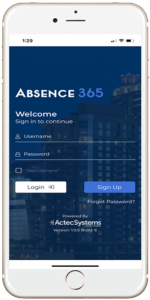 Building an effective employee schedule is critical to every business’s success. This is true whether an organization operates 24/7, works a traditional nine to five, or spans unusual hours. While these companies have different scheduling requirements, all businesses can benefit from the following guidelines when putting together their employee’s schedules:
Building an effective employee schedule is critical to every business’s success. This is true whether an organization operates 24/7, works a traditional nine to five, or spans unusual hours. While these companies have different scheduling requirements, all businesses can benefit from the following guidelines when putting together their employee’s schedules:
- Understand the business. Employers need to know their scheduling requirements before they can optimize work schedules. For example, 24-hour businesses will need rotating shifts, whereas companies that operate during standard business hours will do best with fixed schedules. Businesses like coffee shops or restaurants have an additional complication of peak business hours. For example, the coffee shop will need more employees to cover the morning influx of commuters, while restaurants will need to schedule more staff to cover the dinner rush.
- Consider employees’ needs. This isn’t as simple as knowing employee availability. Every employee has unique skills and preferences. Businesses that don’t consider these factors may schedule employees that are ill-suited to the shift. Continuing with the coffee shop example above, a new employee may have morning availability all week. However, their inexperience can become a significant bottleneck as they require more time to perform tasks than experienced employees do. It’s also best practice to try and schedule employees during their preferred hours. It may not always be possible, but it reduces employee turnover.
- Keep the schedule predictable. Employees appreciate having some consistency to their schedule. While this isn’t an issue for companies with standard work hours, it can be a problem for shift work or 24-hour businesses. For example, ER nurses that work 12-hour shifts won’t appreciate their schedules switching from night shift to day shift every week.
- Empower employees. Employees have lives outside of work, and they won’t always be able to work their usual schedule. Employers can implement software that allows employees to request time off rather than routing through a manager, then to a department head, before finally making it to HR. This allows companies to see all leave requests in one location, which facilitates better scheduling. It also gives employees some autonomy over their schedule.
- Invest in technology. The days of creating a schedule with pen and paper are long gone. Investing in the right software can reduce the burden of schedule building, improve productivity, and increase profits. Employers can also use software to identify trends and make data-based decisions.
Actec understands the complexity and nuances involved in scheduling employees. Without the proper software, businesses may run into labor compliance issues, struggle to keep up with leave requests, and overlook attendance problems. Our absence tracking mobile app helps ensure compliance with labor laws, allows employees to submit leave requests, and provides actionable insight into employee attendance. Contact us to learn how our mobile app can help your organization.

 With many employees still telecommuting, businesses are familiar with the challenges of managing employees they no longer see in person. Some of the most common pain points are confusion regarding new procedures or projects, diminished productivity, and administrative difficulties. Businesses can implement several strategies to help reduce these issues.
With many employees still telecommuting, businesses are familiar with the challenges of managing employees they no longer see in person. Some of the most common pain points are confusion regarding new procedures or projects, diminished productivity, and administrative difficulties. Businesses can implement several strategies to help reduce these issues. HR needs modern solutions to improve the accuracy of attendance tracking. Upgrading outmoded systems such as manual record-keeping or physical timecards saves money and improves productivity. Antiquated legacy systems for attendance will always fail to meet expectations. Businesses that invest in modern attendance software can reap the following benefits:
HR needs modern solutions to improve the accuracy of attendance tracking. Upgrading outmoded systems such as manual record-keeping or physical timecards saves money and improves productivity. Antiquated legacy systems for attendance will always fail to meet expectations. Businesses that invest in modern attendance software can reap the following benefits: Many startups and several small businesses often rely on a single individual to manage human resources tasks. Some business owners make this decision due to the small nature of the company and perceived lighter workload. However, even the smallest of businesses have to comply with labor laws and other work regulations.
Many startups and several small businesses often rely on a single individual to manage human resources tasks. Some business owners make this decision due to the small nature of the company and perceived lighter workload. However, even the smallest of businesses have to comply with labor laws and other work regulations. Remote employees add a layer of complexity to absence management. Many employers have a hard enough time keeping track of who arrived and at what time at their brick and mortar offices. Remote teams are even more difficult to keep tabs on due to the virtual nature of their work. For businesses that suspect or know they have an attendance problem, the following mistakes could be the cause:
Remote employees add a layer of complexity to absence management. Many employers have a hard enough time keeping track of who arrived and at what time at their brick and mortar offices. Remote teams are even more difficult to keep tabs on due to the virtual nature of their work. For businesses that suspect or know they have an attendance problem, the following mistakes could be the cause: Businesses can’t function much less turn a profit if the employees don’t show up to do the work. When absences begin piling up, it has a domino effect on the rest of the company. Projects may fall behind schedule if a key employee is regularly missing. This bleeds into other projects as well as team members may need to stop what they’re doing to catch up on the absent employee’s work. This effects workplace morale as well, causing a company-wide productivity problem.
Businesses can’t function much less turn a profit if the employees don’t show up to do the work. When absences begin piling up, it has a domino effect on the rest of the company. Projects may fall behind schedule if a key employee is regularly missing. This bleeds into other projects as well as team members may need to stop what they’re doing to catch up on the absent employee’s work. This effects workplace morale as well, causing a company-wide productivity problem. Keeping track of employee’s attendance is vital to the success of any business. Attendance is a significant indicator of the overall health of any company. Whether employees are consistently tardy, call out often without notice, or work well after closing time, they can cause a chain of events that derail the company’s goals. For example, employees that have frequent, unplanned absences affect workflow and can delay projects. Conversely, employees that clock 60-hour work weeks on a regular basis run the risk of burnout, which stymies productivity.
Keeping track of employee’s attendance is vital to the success of any business. Attendance is a significant indicator of the overall health of any company. Whether employees are consistently tardy, call out often without notice, or work well after closing time, they can cause a chain of events that derail the company’s goals. For example, employees that have frequent, unplanned absences affect workflow and can delay projects. Conversely, employees that clock 60-hour work weeks on a regular basis run the risk of burnout, which stymies productivity. When a significant number of employees begin to call out of work or a single employee incurs an abnormal number of unscheduled absences, most businesses know their first step to rectifying the issue is to identify the cause. Stress outside of the workplace, unpleasant managers, and more can contribute to employee absenteeism. However, with COVID-19, businesses already know the why. The pandemic has changed everything about “business as usual” and absence management is no exception.
When a significant number of employees begin to call out of work or a single employee incurs an abnormal number of unscheduled absences, most businesses know their first step to rectifying the issue is to identify the cause. Stress outside of the workplace, unpleasant managers, and more can contribute to employee absenteeism. However, with COVID-19, businesses already know the why. The pandemic has changed everything about “business as usual” and absence management is no exception.